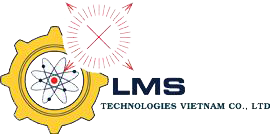Side Stream Rheometer SSR
The GOETTFERT SIDE STREAM RHEOMETER SSR is based on the first melt return online capillary rheometer developed by GOETTFERT many years ago. The new SSR uses the same annular melt transfer line as the old and no waste stream is generated because the tested material is returned to the extruder. The advantage of SSR is that only one tap hole is needed and this make the installation of the system to the extrudermuch simpler.
The SSR annular clearance connection is compatible with the standardized M18x1,5" bore (alternatively also M26 or M36 x 1,5"). Therefore a flexible and fast installation is possible to any existing bore of an extruder, which was normally prepared for a pressure or temperature sensor. This also means lower cost, minimum of planning effort, and eliminates expensive modification of the extruder with a suitable adapter plate.
-
The SSR's annular melt transfer line adapter readily attaches to existing standard M18 x 1.5 ports, often used for pressure, temperature and other transducers.
-
The convenient installation means money savings in the planning, design and execution stages, because no flanges need to be fitted, holes drilled or modification made to extruders.
-
The compact design makes it possible to mount the instrument vertically as well as horizontally.
-
The SSR is available in single or dual (two dies in series) die design. A dual point measurement provides enough information to not only measure viscosity (or indicate melt index), but also simultaneously the flow exponent, which is an important indicator of change in the molecular weight distribution.
-
Our new SSR benefits from many years experience with our Windows® software ROSWin designed for use with our other on-line rheometer systems RTR-RTS and MBR. With this stable platform it is possible to run melt flows in the range of 0,6 - 60 cm³/10min or 5-500 cm³/10min without changing the dies.
-
The system is also available for use in hazardous areas zone 1 and 2 with the classification Ex II 2 G EEx de ia c/k IIC T2/T3.

.png)

